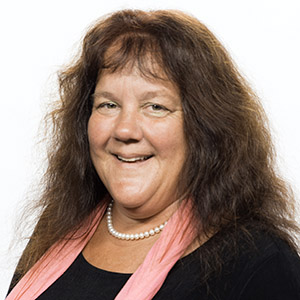November 9, 2022
 A large interdisciplinary team conducted a large randomized controlled trial to increase African American question asking during glaucoma visits and improve patient outcomes. The team was led by Betsy Sleath. Ph.D., George H Cocolas Distinguished Professor in the Division of Pharmaceutical Outcomes and Policy (DPOP).
A large interdisciplinary team conducted a large randomized controlled trial to increase African American question asking during glaucoma visits and improve patient outcomes. The team was led by Betsy Sleath. Ph.D., George H Cocolas Distinguished Professor in the Division of Pharmaceutical Outcomes and Policy (DPOP).
In 2017, the team received a grant worth nearly $1.6 million from the Agency for Healthcare Research and Quality to help reduce vision problems in African Americans caused by glaucoma.
Glaucoma is the leading cause of irreversible blindness in African American patients. In prior work, the team found that African American patients were significantly less likely to be educated about glaucoma by their ophthalmologists and were significantly less likely to be adherent to their glaucoma medications than White patients. These findings are especially important given that African American eye care patients are more likely to be interested in learning about glaucoma than other races.
In order to increase question asking for African American patients, the team developed a question prompt list, a brief list of common questions about glaucoma and its treatment that a patient might want to ask their doctor. Prior use of question prompt lists for cancer patients was shown to increase the number of questions that they asked their doctors, improved patient recall of information, and prompted doctors to give patients more information. In addition to the question prompt list, the team created a short educational video that stressed the importance of patient involvement during glaucoma visits that patients watch immediately before visits.
“We hypothesized that African-American patients with glaucoma in the intervention group would have significantly improved communication with their ophthalmologists, and this improved communication would improve glaucoma medication self-efficacy, adherence and intraocular pressure,” Sleath said.
To test this hypothesis, the team undertook a randomized controlled trial. One hundred and eighty-nine African American patients with glaucoma were enrolled in the trial and randomly assigned to either a usual care or intervention group. In the intervention group, patients watched the video and received the question prompt list to use during their visits, while in the usual care group they did not. These visits were audio-taped, and patients were interviewed afterwards.
The intervention was highly effective. The team found that the pre-visit intervention increased patient question-asking about glaucoma and glaucoma medications and provider education about glaucoma. “We hope this leads to an improvement in patient intraocular pressure so that a patient’s glaucoma does not get worse or lead to blindness.” said Sleath.
Among their findings, patients in the intervention group were significantly more likely to ask one or more questions about glaucoma than patients in the usual care group. Patients in the intervention group were also significantly more likely to ask one or more questions about glaucoma medications than patients in the usual care group. These patients were also significantly more likely to receive more areas of education about glaucoma from their providers during visits. Finally, patients who asked one or more questions about glaucoma medications were significantly more likely to receive more areas of education about glaucoma medications from providers.
Sleath and her team emphasized that their research is not yet finished. “The current manuscript only examined whether our intervention increased African American patient question-asking about glaucoma and provider education at the baseline visit,” said Sleath. “We are now following patients for 12 months to see if the intervention and increased patient question-asking and provider education leads to improved adherence (measured electronically) and intraocular pressure.”
The full team includes Delesha Carpenter, Ph.D., M.S.P.H., Associate Professor and Interim Chair of the Division of Pharmaceutical Outcomes and Policy (DPOP); Scott A. Davis, Ph.D., Assistant Professor in DPOP; Nacire Garcia, M.S., Social Research Specialist in DPOP, Abena Adjei, B.S., research assistant in DPOP, Charles Lee, M.D., CEO of Alexor, LLC; Donald L. Budenz, M.D., M.P.H., Kittner Family Distinguished Professor and Chair of the Department of Ophthalmology at the UNC School of Medicine; Alan Robin, M.D., Executive Vice President of the American Glaucoma Society; Kelly Muir, M.D., M.H.S., Associate Professor of Ophthalmology at Duke University School of Medicine; Maria S. Romero M.D. CEO of Precision Eye Care in Baltimore, Maryland and Gail Tudor, Ph.D., Director of Public Health at Southern New Hampshire University.
The team has provided a link below to both the question prompt list and the video for use by providers.
Prompt list: Glaucoma-Prompt-List
Video: https://www.youtube.com/watch?v=rH35XwBnes0
To access the full study, click the link below.
https://authors.elsevier.com/a/1fxix9Cn0ylcpO
Latest News

Ph.D. student aims to make global impact through vaccine research



